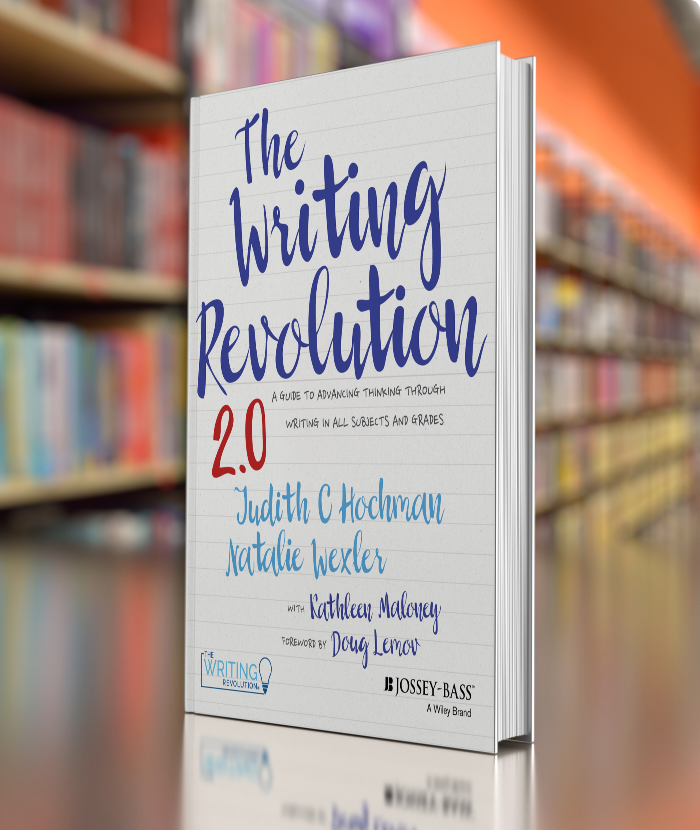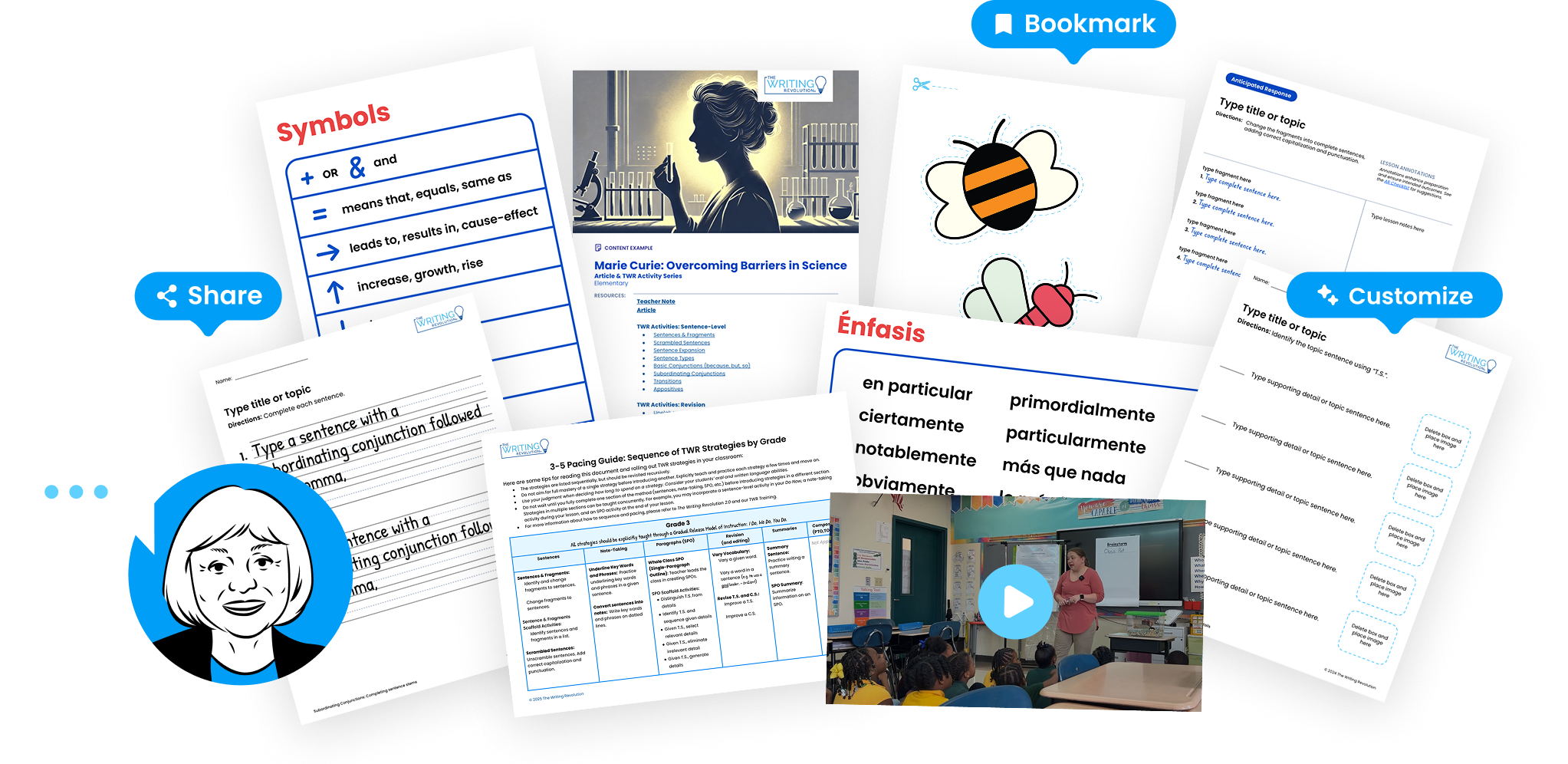Chapter 4
Sentences: Introducing Variety & Complexity
In order for students to vary their sentence structure, they need explicit instruction on different types of sentences and how to use them. This is especially important because the syntax of written language is more complex than that of spoken language. This chapter covers the following TWR strategies: sentence types, developing questions, “because, but, so,” subordinating conjunctions, transitions, appositives, and sentence combining.
Customizable Template
because, but, so
Customizable Template
Appositives
Content Example
because, but, so
History I The Nile
Content Example
Transitions
ELA I Jumanji
Content Example
Appositives
ELA I A Raisin in the Sun
Classroom Poster
Subordinating Conjunction
Classroom Poster
Transitions
Grades 3-12
Teaching Resource
Expository Writing Terms
Appendix A.
Teaching Resource
Transition Words & Phrases
Appendix C
Discussion Questions
- Explain the benefits of teaching students each of the following strategies:
- sentence types
- developing questions
- because-but-so
- subordinating conjunctions
- transitions
- appositive
- sentence-combining
- What are ways some of the strategies in this chapter can be differentiated?
- How can grammar be addressed with these strategies?
- Create topic and concluding sentences with the three sentence strategies: sentence types, subordinating conjunctions, and appositives. Try using topics from your curriculum.
- Create an activity for each of the sentence strategies presented in this chapter based on the content you teach.
MyTWR Tools
Turn your Hochman Method® training into effective daily instruction with 12-month access to:
- Judy, an AI activity generator & coach
- Content Examples for grades K–12
- Assessment Tools
- Planning Tools
- Classroom Tools
- Videos
- Monthly new and featured resources
- Customizable Templates
- Book Resources

